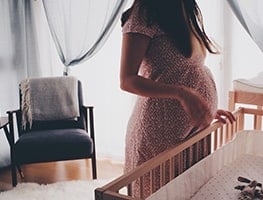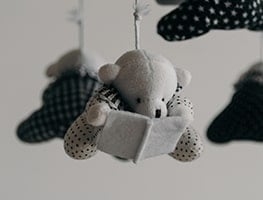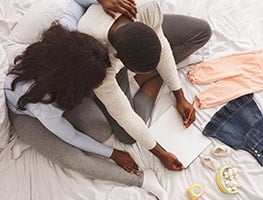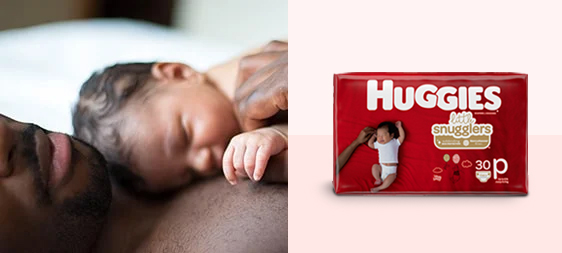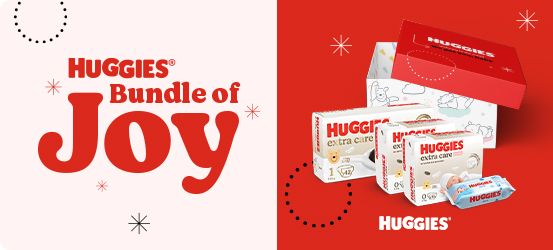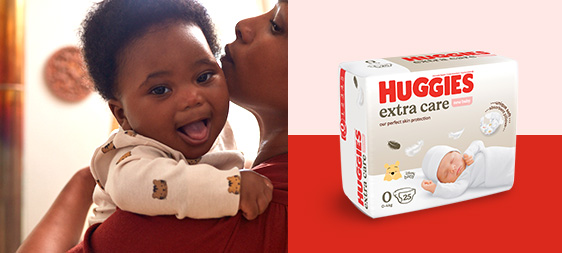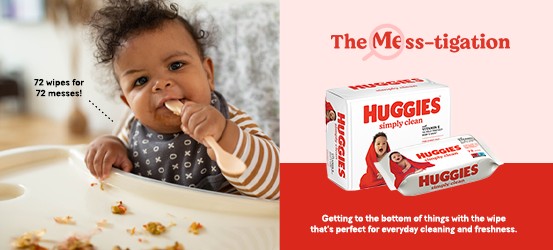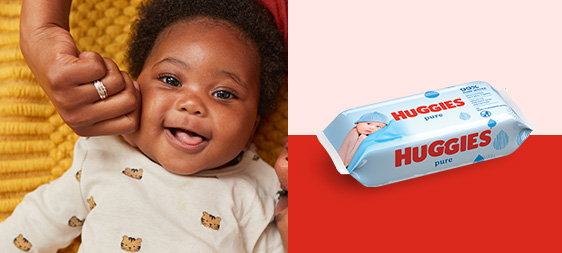Buying for a baby opens up a whole new world of shopping opportunities. If you’ve never had the pleasure before, you are in for a lovely time. At first you’re likely to find the sheer range and choice almost overwhelming, apart from being impossibly cute.
Clever marketing makes baby retail an industry that completely bypasses the brain and goes straight for the ooh! factor in all of us. So even if you’ve had a baby before, you’ll find it impossible to resist the temptation of buying just a few little extras for your new baby.
What’s the latest in baby gear?
Research into safety and design elements are progressing continuously. You’ll be amazed at how quickly developments are made. What may have seemed very up-to-date for an older child just a couple of years before, can seem almost dated by comparison today. But your baby will not care what it has or what you have bought for it. The only things that really register on its radar are having lots of loving care, a full tummy, a dry bottom and having its needs met.
As parents it is easy to get caught up in thinking that what we buy for our children is a demonstration of how much we love them. ‘If we spend more and this is obvious, then it follows that our children are more precious and valuable to us.’ But this is not the case. Consumerism is not important to babies, they have very simple needs.
Will I get the pink or the blue?
Apart from the must-have items, such as a cot, a pram and a car seat, there’s also a world of choice when it comes to baby clothing. If you don’t know what sex your baby is before it is born, it is safest to go for white, lemons and soft pastels. Some women feel so strongly about their baby’s sex that with utter confidence, they fill the nursery with only pink or blue items.
Be prepared to be unprepared if you do this, as even pregnancy intuition can be very wrong. So can ultrasounds, which is why most sonographers won’t give a 100% guarantee of the baby’s sex.
When is the best time to start getting organised?
There is no right or wrong time, because this too is open to individual choice. Some women err on the side of caution and wait until the second or third trimester before they start while others have been collecting baby-related items for years.
If there are other babies in the family, you may find yourself sharing the basic equipment. Borrowing makes sense and saves money. If you’ve had a baby before, chances are you’ll be able to recycle most of what you’ve already got.
If money is tight, include some baby-related items each time you go grocery shopping. Bath wash, washing detergent, softener, disposable nappies and wipes can all be stockpiled so you can avoid any big expenses all at once. If your friends and family offer you a baby shower, accept graciously. Apart from being a lot of fun, the presents you’ll receive will help to ease your own financial burden.
Go shopping for the baby with your partner, even if at first he doesn’t seem keen. This is a great way of prompting dads to become involved in pre-baby preparation and it can help them feel they have a role to play. It’s also fun to go with a sister or a girlfriend and bounce ideas off each other regarding what is a good buy.
Essentials
A cot, a pram, a car seat, a baby bath, a baby sling or pouch, a changing table and a high chair from around 6 months. You will also need a comfortable feeding chair for yourself that provides you with good back support and which is easy to get up and out of.
Baby clothes are a must when you consider what to buy for baby. A range of weather appropriate singlets, jumpsuits, t-shirts, leggings, all-in-ones and nighties will form your baby’s wardrobe basics. You are likely to be given clothing when it is born so make a point of using it, even if you think some of it is too special just for wearing at home. Babies grow so quickly and they soon outgrow their small clothing sizes.
Cot linen that is suitable for the season. You’ll be amazed by how much linen your little one can get through in a day so make sure you have a good supply. A waterproof mattress cover or mattress protector is another “must-have” practical item.
A washing machine, dryer and hanging options. Going to the laundromat when you have a baby is a trip you won’t want to make. You won’t find the thought of putting your precious baby’s clothing in an industrial, public machine very attractive.
Most parents find they need to buy a rocker chair to place their baby in for those times when they need to place them somewhere safe. They vary enormously from the very ornate to the more basic, generic type. One with a hanging frame that supports some toys is good.
As your baby gets older you will need to think about safety around the home. Some gates to fit across doorways, baby latches for cupboard doors and electric socket plugs are all important. Bathrooms pose a particular risk, so investigate hot water safeguards, slip resistant mats, brackets for hair dryers and lockable medication cupboards.
Become familiar with the help line numbers in your area for services regarding child health, general health information and emergencies.
For the car
All babies and children must be secured while travelling in a car, in an age and weight appropriate child restraint up to the age of 7 years. Individual brands and their designs vary, though they are generally rearward-facing for babies up to 9-12 kg, forward-facing for children from 8-18 kg and booster seats for older children from 14-26 kg. Select a restraint or car seat that is approved by the SABS.
If you or your partner, are confident about fitting the child restraint correctly to your car, then do so following the manufacturer’s instructions. If not, please get a professional to do it. Find out from your insurance company or automobile club or where you buy it from, about services regarding the fitting of restraints / car seats by qualified staff.
It can be useful to have a couple of toys in the car to distract and occupy your baby when you are driving. Keeping some favourites with you can save your sanity on a long drive.
A shade cloth for the window so your baby is not exposed to the sun. These usually attach with suction caps and have the advantage of being transparent enough to not impede driver visibility. You could also find out about the door sleeves that would fit your particular make and model of car door.
A small, portable cooler box or insulated carrier is always handy in a car for snacks or drinks for your little one.
For the home
Somewhere for the baby to sleep. Your baby will need to have a safe place where it can sleep undisturbed but still be heard if it cries. Some parents like to use baby monitors and feel a sense of security if they are linked to their baby via one.
A colourful floor rug or mat. Many have bright prints and a detachable frame that can hold toys for the baby to look at. Have a small range of toys that are age appropriate. Young babies can see black and white so look for toys with these as the primary colours. Don’t forget a couple of books. It’s so important to start reading to your baby from birth, some board or cloth books would be ideal.
Some parents still like to use a play-pen to place their babies into. Not so much to confine the baby, but to keep inquisitive siblings at a safe distance when parents can’t be right there.
Even if you aren’t a fan of dummies (pacifiers), buy a newborn one, just in case it’s needed. A late night dash to the pharmacy is not uncommon in households where newborn babies need some extra comfort.
When you’re out and about
A nappy bag with a supply of Huggies® Nappies, Newborn & Sensitive Wipes, tissues, a disposable change mat, nappy waste bags, creams and any number of “emergency” items. The contents of some nappy bags could support a family on a desert island for a month, but taking too much can be annoying, especially if you have to carry it around. But most moms find the opposite worse – what if I forget something important!
A sun-shade or pram cover plus a rain hood for the pram. Most prams have a tray or detachable bag included and these are very handy when shopping. Keep a fold-up umbrella on board for those times when you’re caught short. Remember a hat for the baby or better still, buy a couple. One for the house and one for when you’re out. Don’t forget to buy baby sunglasses as well. Protecting baby’s eyes is as important as protecting their skin, especially in our South African summers.
Don’t forget your own needs when you’re out. It is easy to forget yourself when you’re so focused on what the baby needs. A water bottle, sun protection and comfortable shoes are a must when you’re out and about.
Think about investing in a new handbag that doesn’t require you to dig around too much. One of the secrets of being organised is being able to place your hands on what you want with the minimum of fuss.
Toiletries
The range of toiletries available for babies is staggering. Most baby-specific products have been dermatologically tested and are hypo-allergenic. Some parents find a range they like and stick with that while others are not so brand loyal.
The minimum requirement for bathing is some baby soap or bath wash that can be used as a shampoo as well. You could also try disposable washcloth products for a gentle all over clean at bath time. Don’t forget a soft-bristled hair brush. Gentle scalp brushing each day helps to prevent cradle cap.
A soft towel and facecloth that is used only for the baby is important. Sharing towels and bed linen is one very effective way of transferring infection between individuals in a household – so make sure baby has their own set.
You will need Huggies® Newborn Nappies, Huggies® Newborn & Sensitive Wipes, cotton ear buds and cotton balls on your changing table. It will also help to have some emollient cream for nappy changes.






